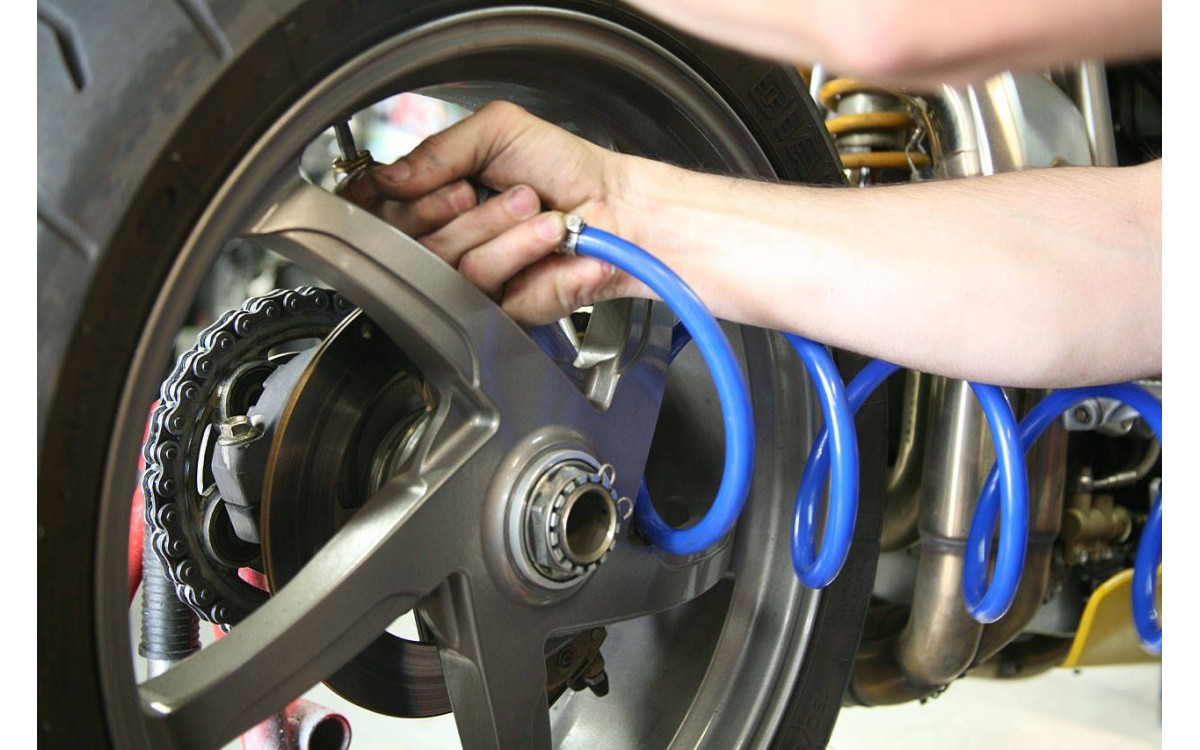5 Tips on Tyre Pressure
We bikers are obsessed with tyre performance, or more specifically, grip. But then we begin to forget about keeping them properly inflated after mounting our set of expensive tyres.
There are some riders who totally neglect their tyres until they hit something, causing the tyre’s carcass to break and strip off. Oh yes, they will then complain on social media that the tyres are crap and make complete fools of themselves.
Motorcycles are highly dependent on the correct tyre pressure when compared to other vehicles. We only have two small contact patches compared to four or more large ones. Our lives depend on those two patches that are no larger than a human palm. The inflation pressure determines the sizes of these patches.
So, here are the 5 essential tips about tyre pressure.
1. Too little, too much
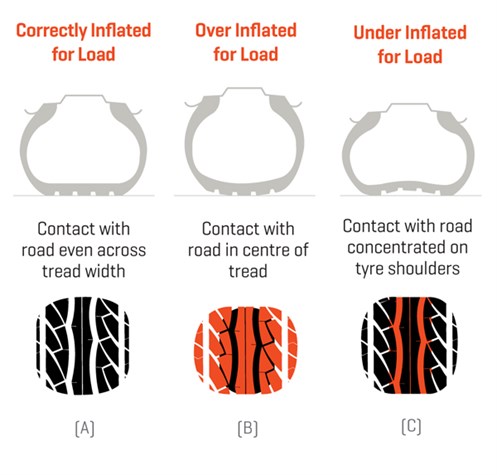
Low inflation pressure will cause its footprint to expand. This expansion will then lead on to many unwanted effects:
- Increased rolling resistance. More engine power, hence fuel, is required to overcome the friction of the increased contact patch and continue to move.
- The bike slows excessively when you go off the throttle or brake.
- More difficulty in turning the bike, making steering feel heavy and lethargic.
- Excessive flexure causes the tyre to expand at speed, then shrink when the bike slows down.
- The tyre’s sidewalls and carcass flex excessively and the bike wobbles in corners.
- Excessive flexure can cause the motorcycle’s rim to hit the sharp edges of a hole, resulting in a bent or broken rim.
- The tyre overheats, causing excessive wear.
- Overly low pressure may cause the beads to unseat from the rim.
- Damage to the tyre if heavy contact occurs with a hard object, which may lead to cracks, that in turn lead to chunks of rubber being ripped off from the carcass (tread separation).
Too high an inflation pressure will bring about another set of issues:
- The tyre’s footprint becomes smaller.
- Tyre locks up easily when heavy braking pressure is applied.
- Tyre spins easilyduring hard acceleration, especially in the wet,.
- Ride becomes harsh as the tyre bounces over road irregularities.
- Traction is compromised as iscannot conform to road irregularities.
- Tyre slides easily, especially when riding on wet roads.
- The centre portion of the tyre wears excessively.
- Tyre becomeseven more overinflated when they heat up to working temperature.
2. Check the pressure regularly
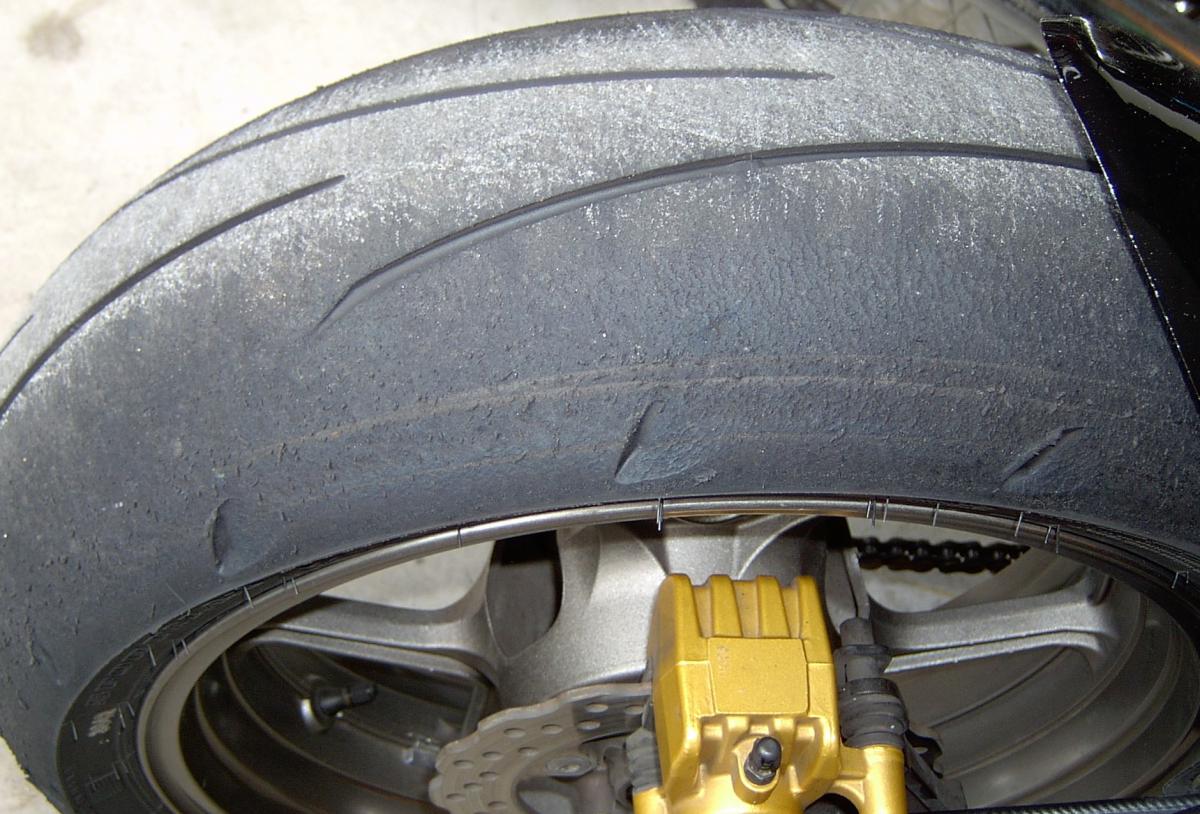
Do not wait until the tyre or wheel is damaged. Or worse, have a crash.
Checking your tyre pressure regularly allows you to discoverpotential problems such leaks early, rather than finding out when you are riding. Monitoring the pressure is easier if your bike is equipped with a tyre pressure monitoring system (TPMS), but make sure you scroll to that info everytime before you ride. There are many affordable aftermarket TPMS these days, too.
Check at least twice per week, but do check each day if you are touring.
3. Check and inflate when tyres are cold
It is always best to check the pressure when tyre is cold i.e. first thing in the morning before you start riding. A tyre builds up heat that is transferred to the air inside it, causing the pressure to rise. Hence, you will get the wrong pressure reading, andinflating the warm or hot tyre will result in the wrong inflation pressure.
4. Buy a good tyre pressure gauge
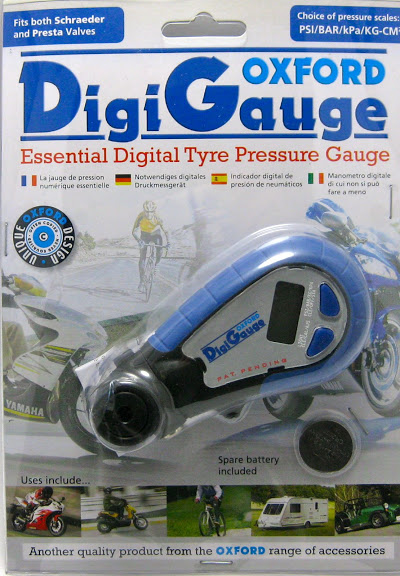
Do not rely on the gauge at the pump in petrol stations. Virtually none is recalibrated after they were installed.
Instead, buy yourself a good tyre pressure gauge. The good ones are more expensive, but they are accurate and reliable, therefore worth the investment.
5. What pressure should I follow?
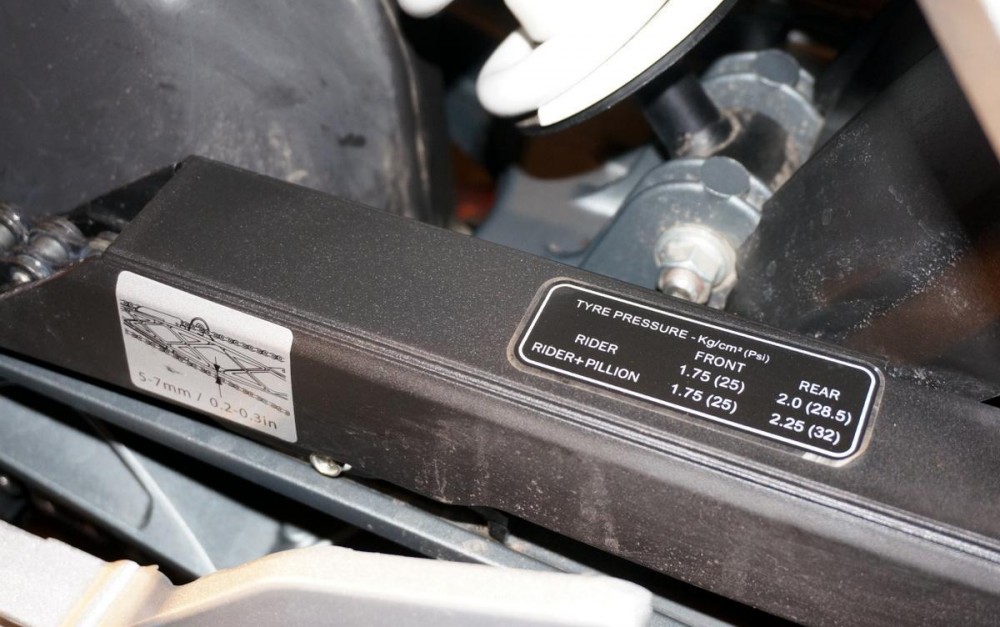
It is best to stick to your motorcycle manufacturer’s recommendations. The manufacturer specifies the pressures based on your machine’s performance envelope and weight.
However, you may increase or decrease the inflation by a little (10 to 15 kPa) to cater for different riding and road conditions, load being carried, and tyre construction (different tyres have softer or harder constructions).
But, NEVER EVER inflate the tyre to the “MAX PRESSURE” number printed on the tyre’s sidewalls. Inflating more than that is even worse.

